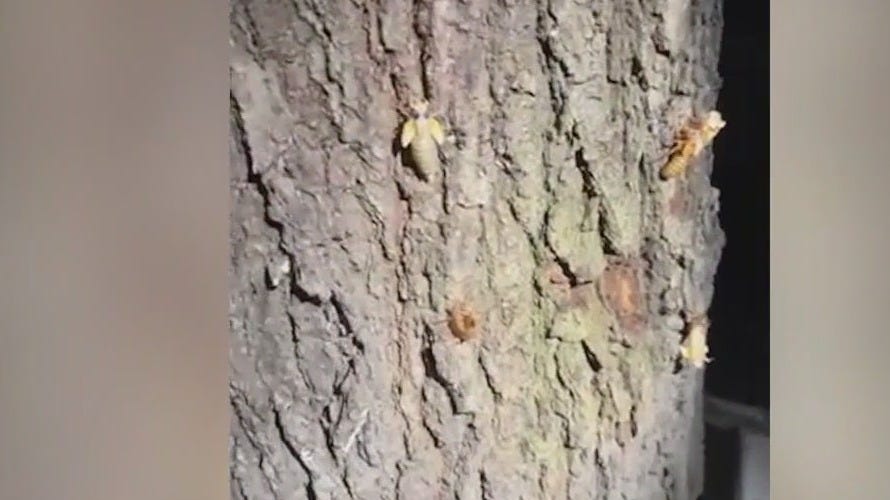Cicada flew into an Ohio driver's window, caused a crash and 'fled the scene'
No one was injured in the crash on June 11, Blue Ash police said.

An Ohio man rolled his SUV onto its side this week while trying to get a cicada out of the vehicle, local authorities said.
“We're all well aware that these pesky cicadas don't respect personal space, including while driving,” the Blue Ash Police Department wrote in a Facebook post on June 12. “It may be a good idea to keep the windows up for the next several weeks. As you can see, a cicada attack can be dangerous.”
Here is what we know about the crash and the cicadas chirping across the U.S. this year.
Driver hit a pole after cicada startled them
The crash happened around 1:48 p.m. on June 11 in Blue Ash, a suburb of Cincinnati, according to a crash report obtained by Paste BN.
The report states that the driver, a 37-year-old man, was in his 2021 Kia Sorento when a cicada flew into the window. He tried to get the bug out of the SUV, but he lost control of the vehicle. The driver then veered off the right side of the road, hit a pole, and rolled the car onto the passenger side.
First responders evaluated the driver, but he said he did not need to be taken to a hospital, per the crash report.
No one was injured in the accident, police said, joking that the cicada suspect “fled the scene.”
What are cicadas?
Cicadas are insects that make a rhythmic chirping or creaking noise, according to etymonline. They emerge in groups called broods.
Cicadas belong to the order Hemiptera, the same one that includes stink bugs, bed bugs, aphids and cicada families, according to Cicada Safari, a research group that crowdsources cicada data and sightings.
Among the cicadas, only the males sing, sounding off a mating call, Cicada Safari reported. After hatching, the immature cicadas or nymphs spend 17 or 13 years underground, feeding on roots, then emerge during the spring and transform into adult cicadas.
The current brood, Brood XIV, is periodical and emerges every 17 years. This year, Brood XIV emerged in late April and early May. Sometimes there is overlap or cicadas do not count the years correctly,” wrote Gene Kritsky, who runs Cicada Safari.
Where have cicadas emerged this year?
Brood XIV is concentrated in the eastern U.S. Cicadas have been spotted over the past few months in states such as Ohio, Pennsylvania, Kentucky, and North Carolina, per Cicada Safari’s map.
There have been over 1,000 sightings of cicadas in the Cincinnati area, and over 1,900 in the Asheville, North Carolina area, according to the Cicada Safari map.
“People should notice the loud singing declining over the next two weeks, and the singing should be over in early July,” Kritsky told the Cincinnati Enquirer, part of the Paste BN network, on June 10.
Contributing: Kaycee Sloan, Cincinnati Enquirer; Anthony Robledo, Paste BN
Saleen Martin is a reporter on Paste BN's NOW team. She is from Norfolk, Virginia – the 757. Email her at sdmartin@usatoday.com.